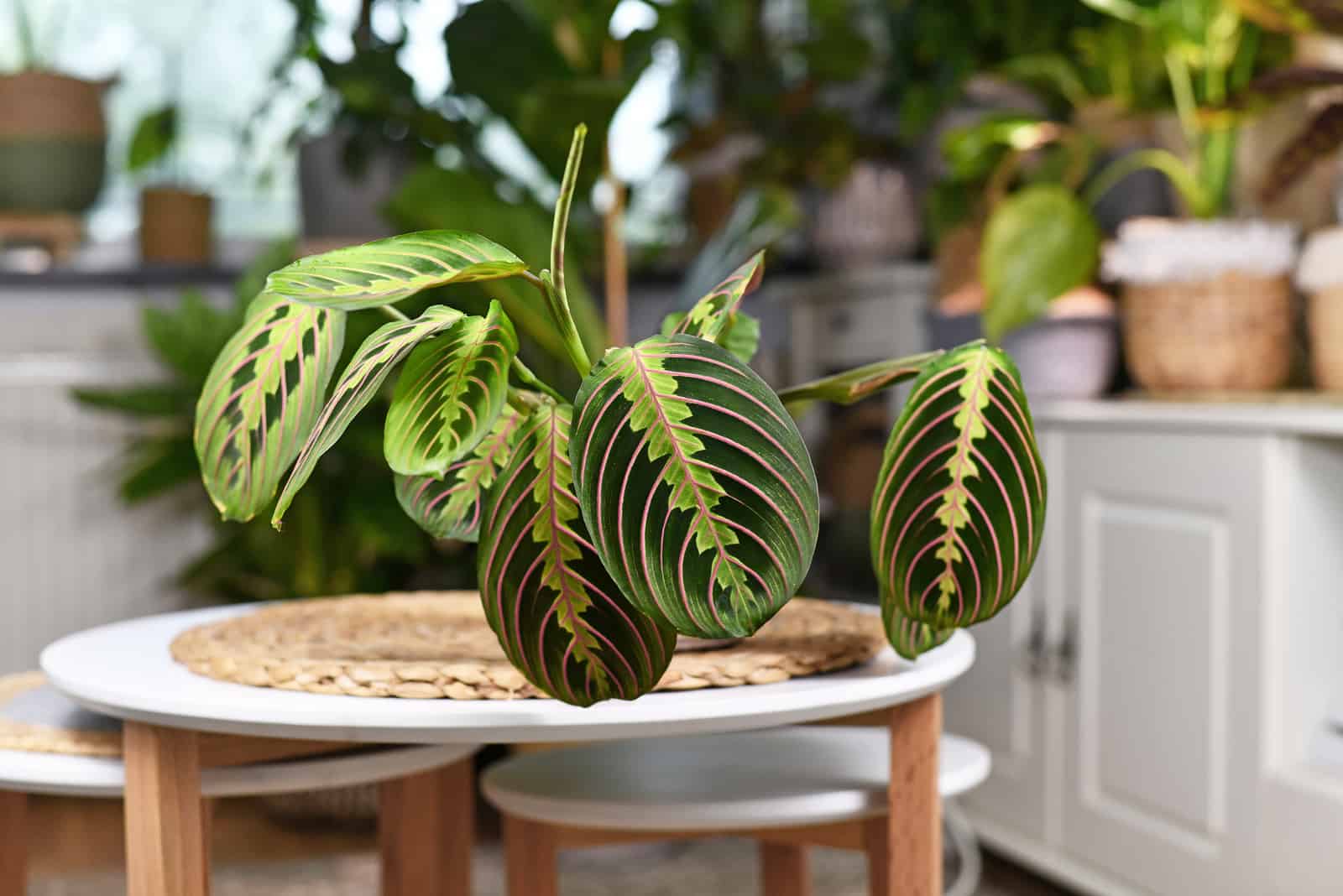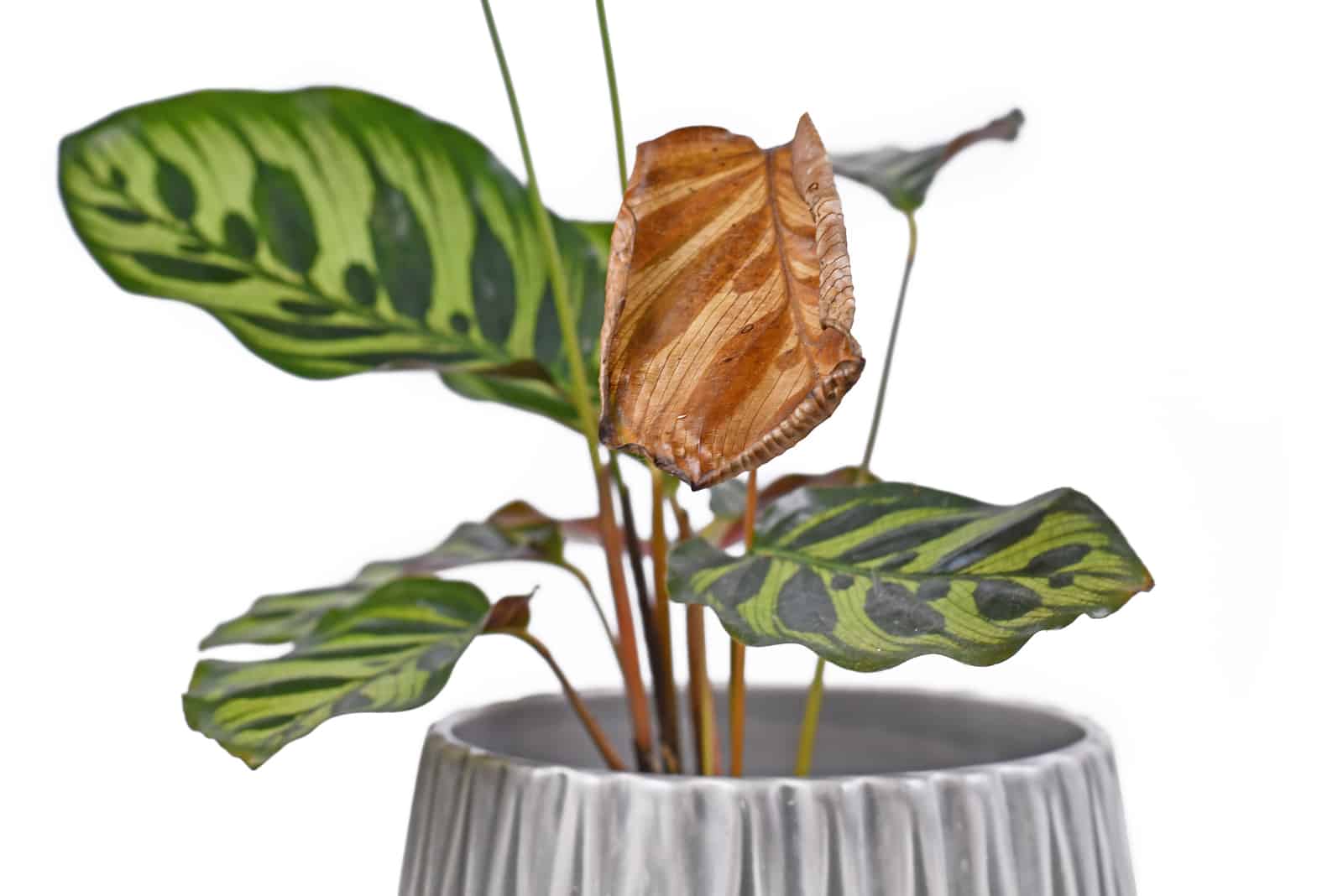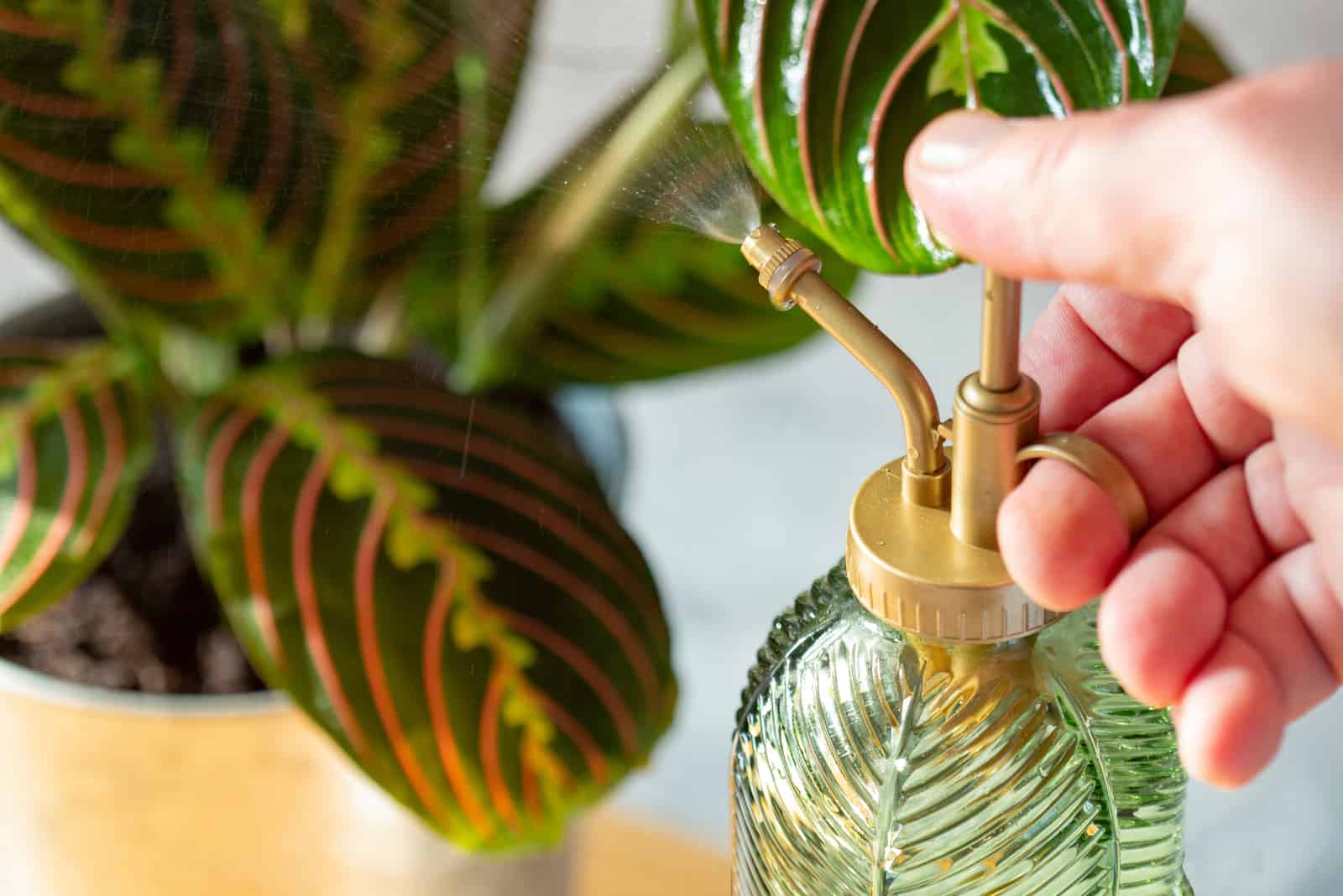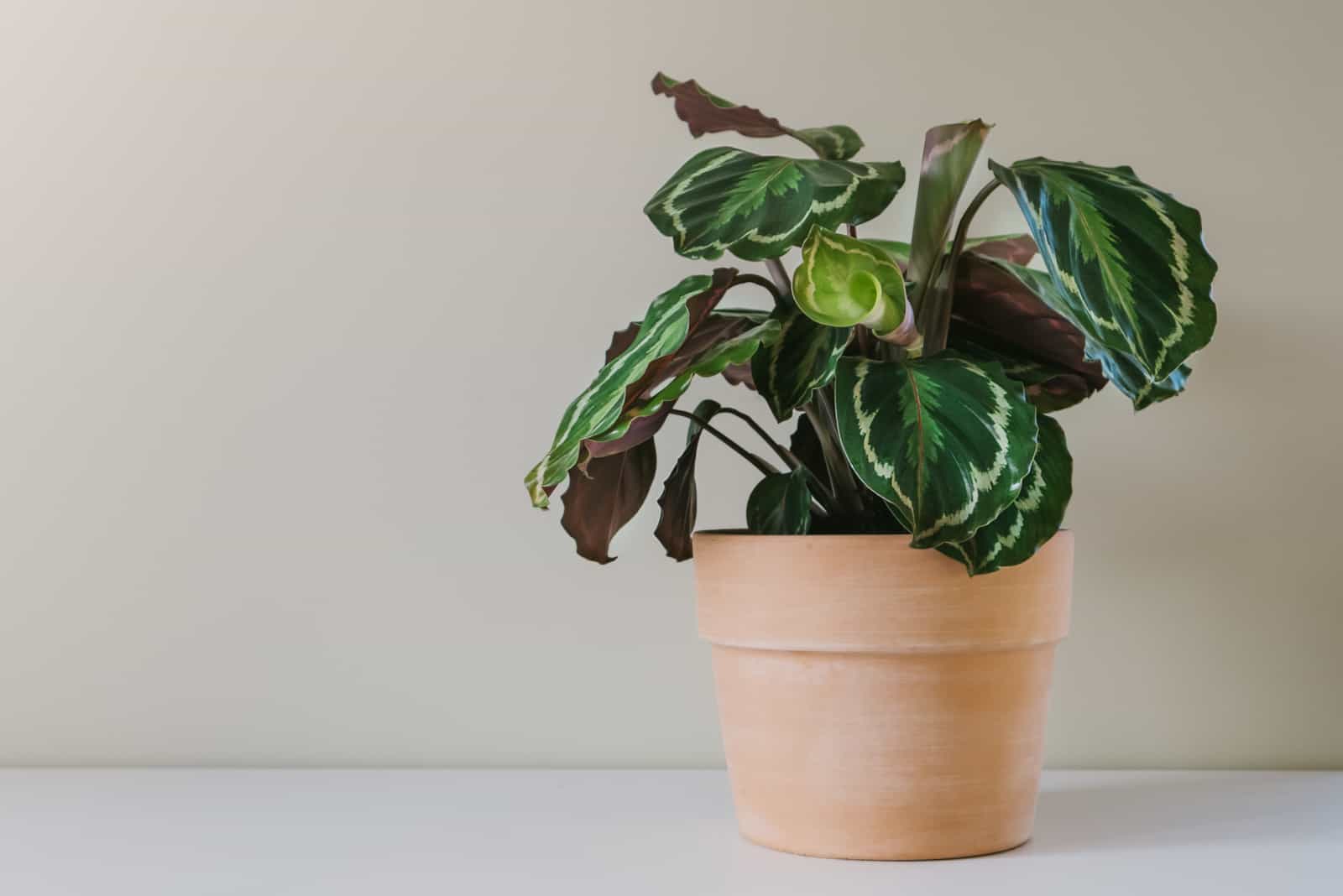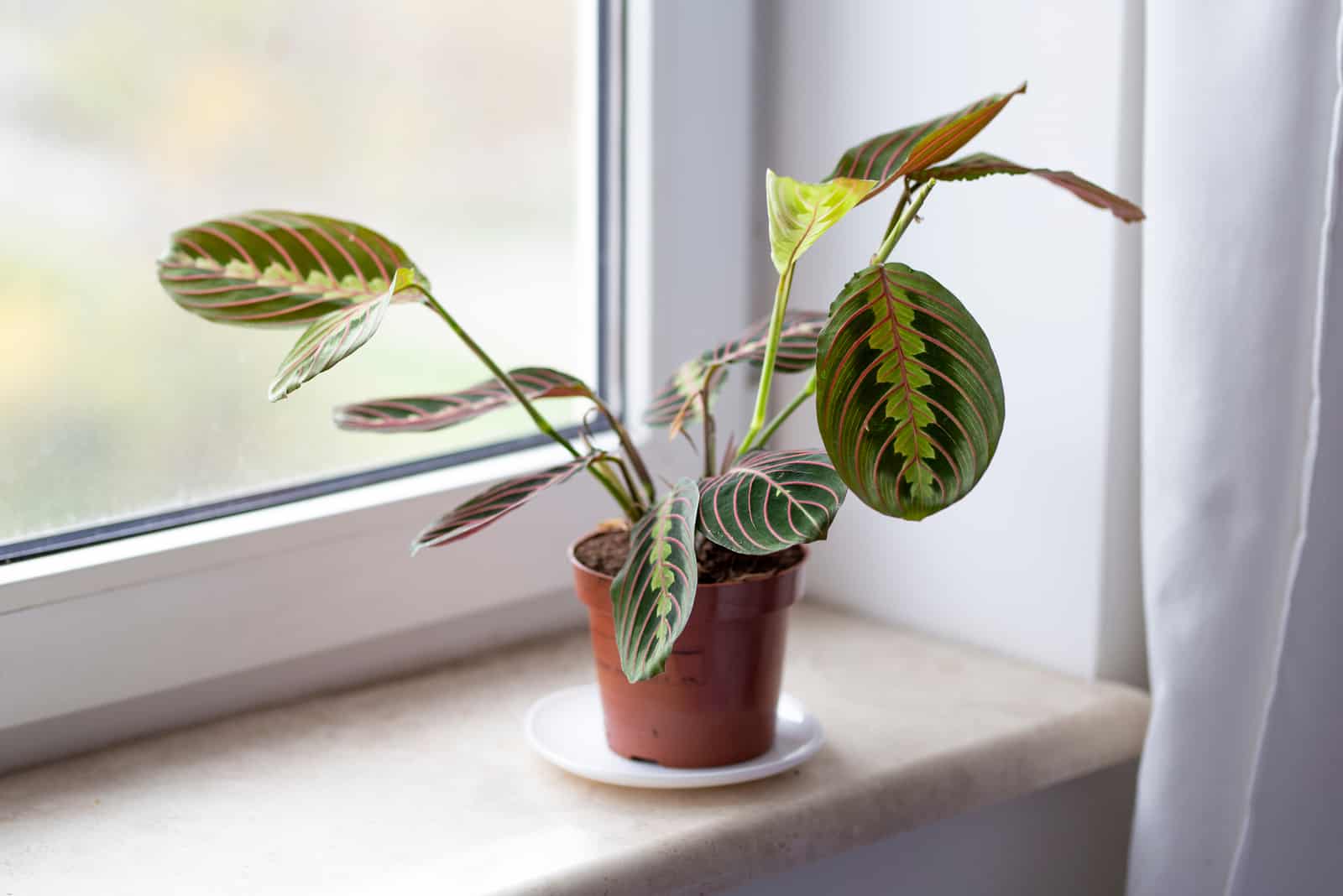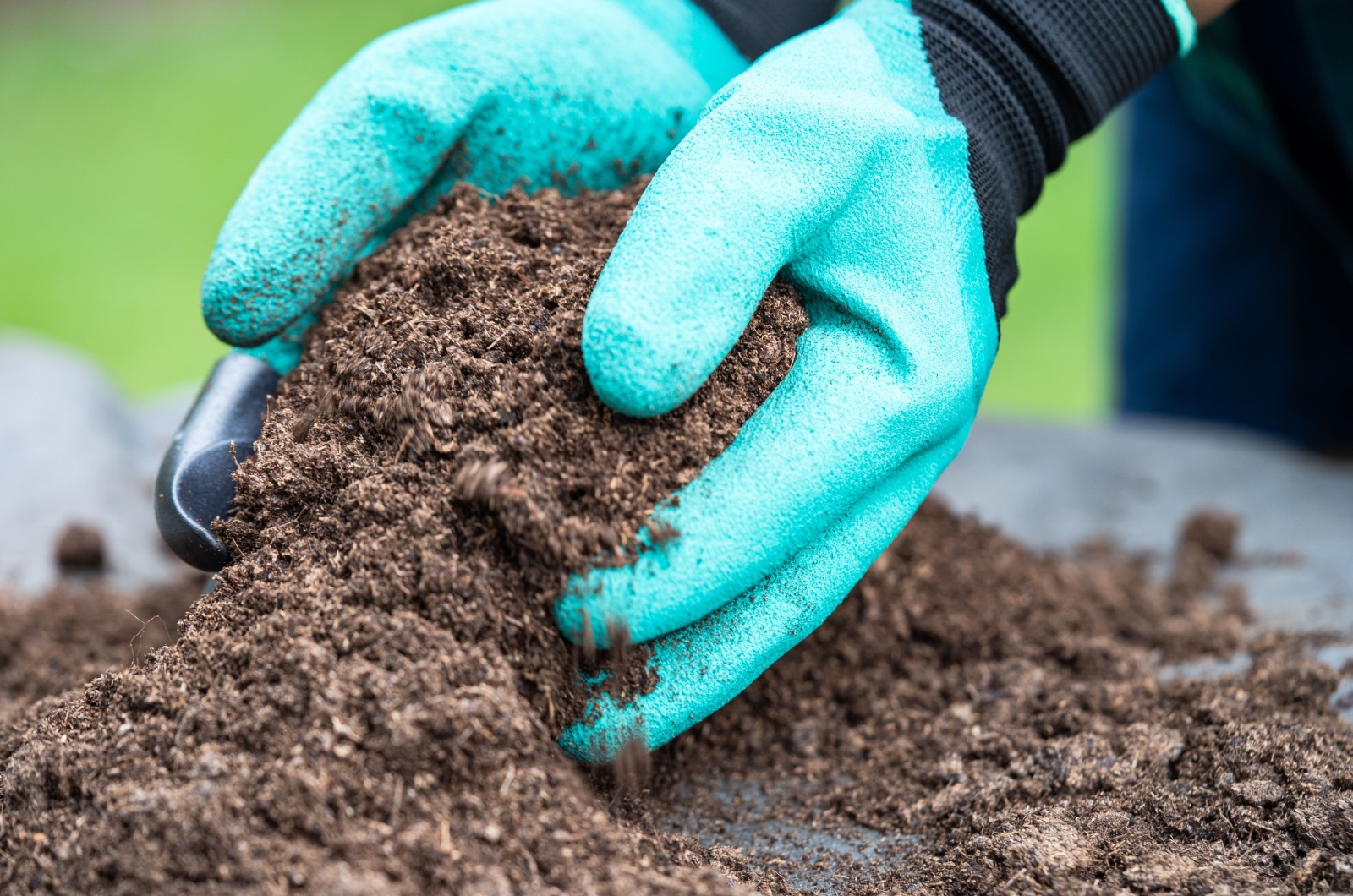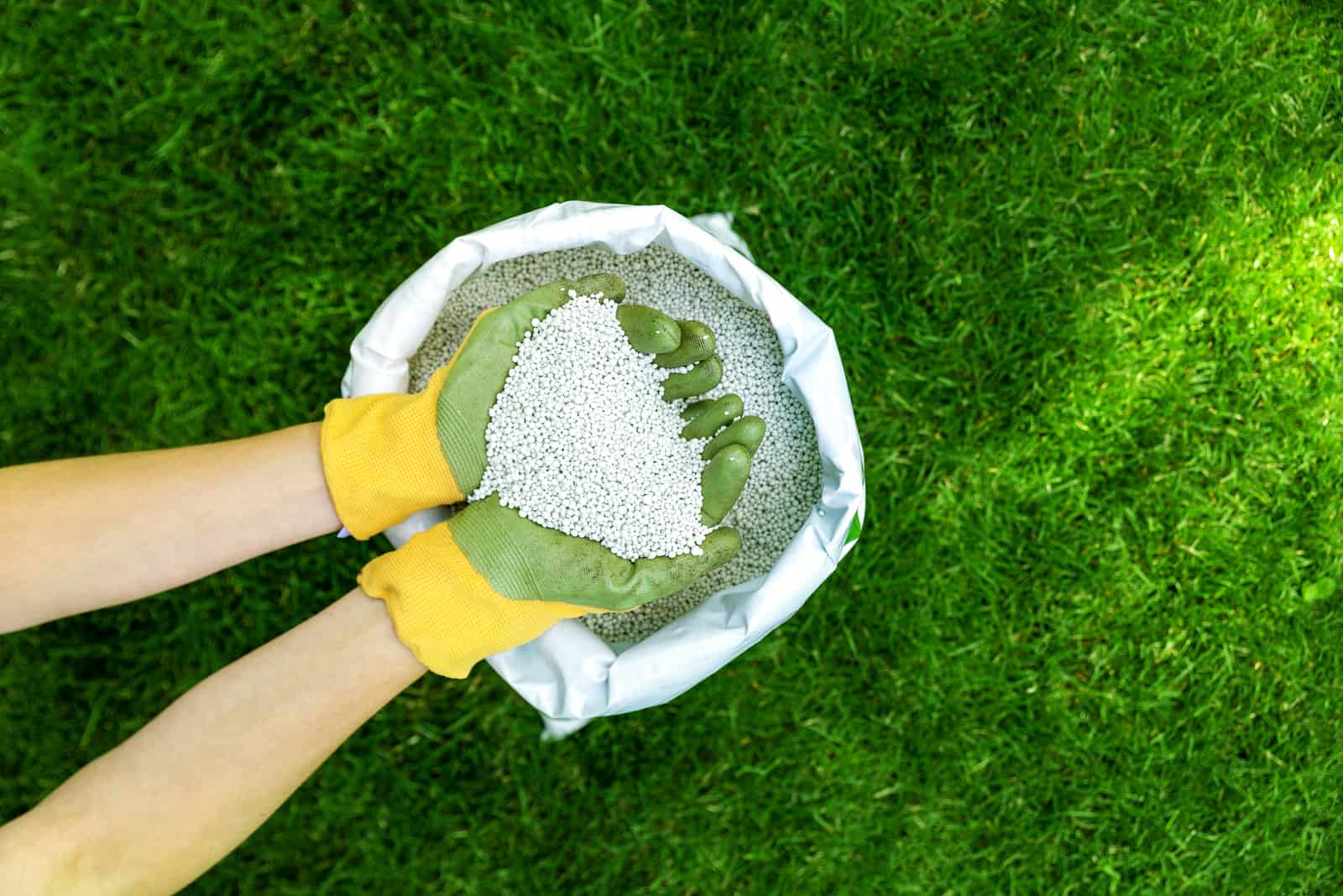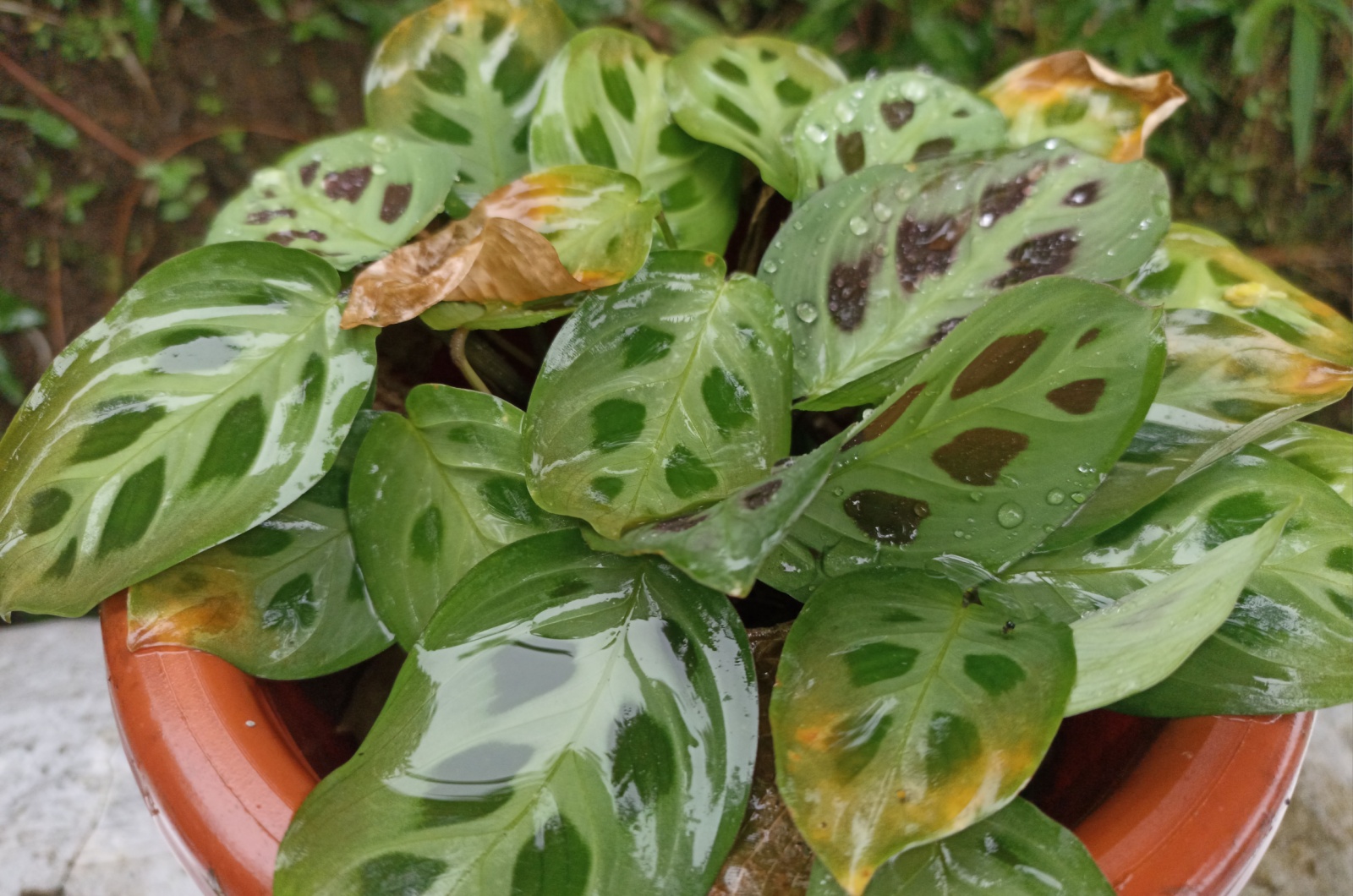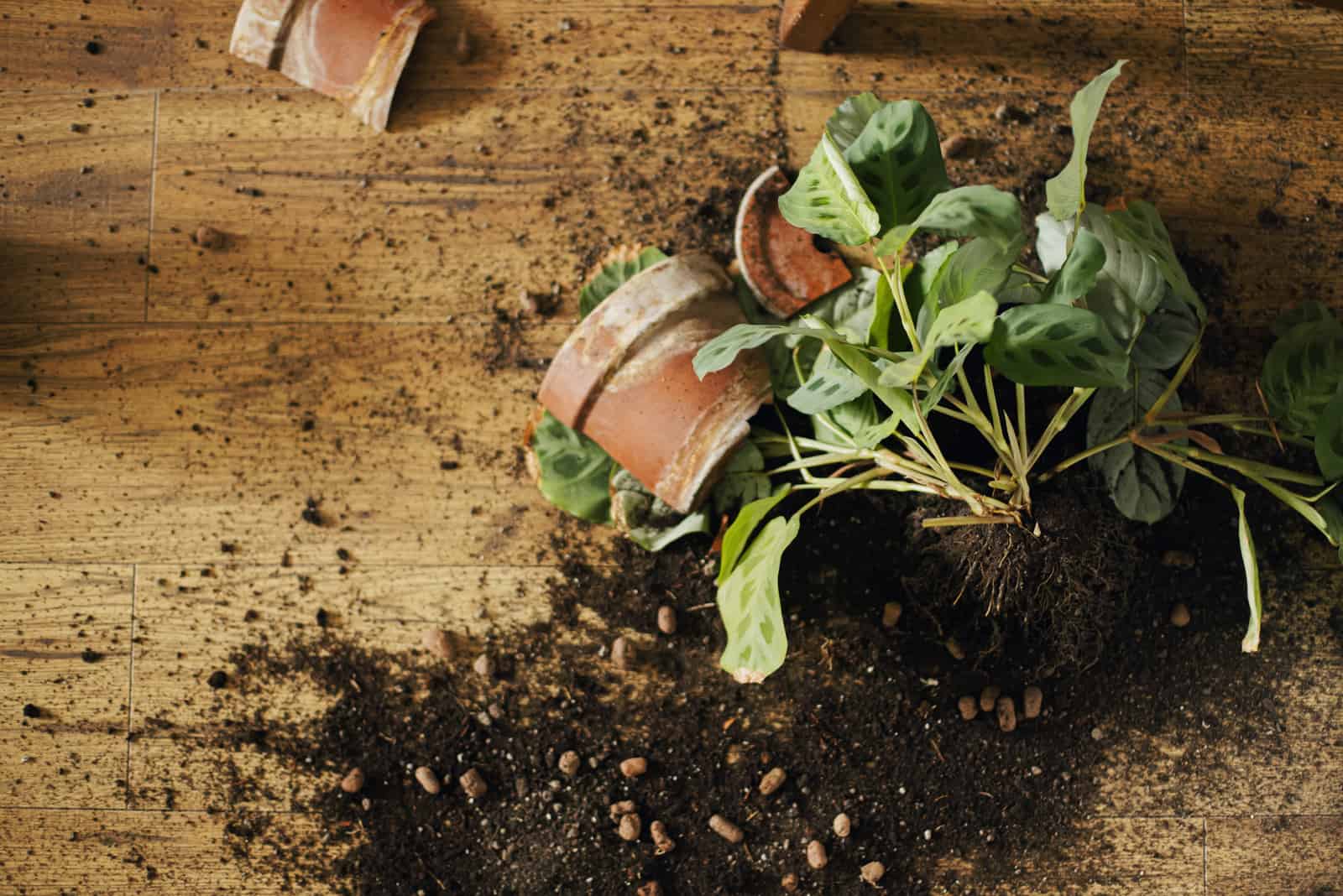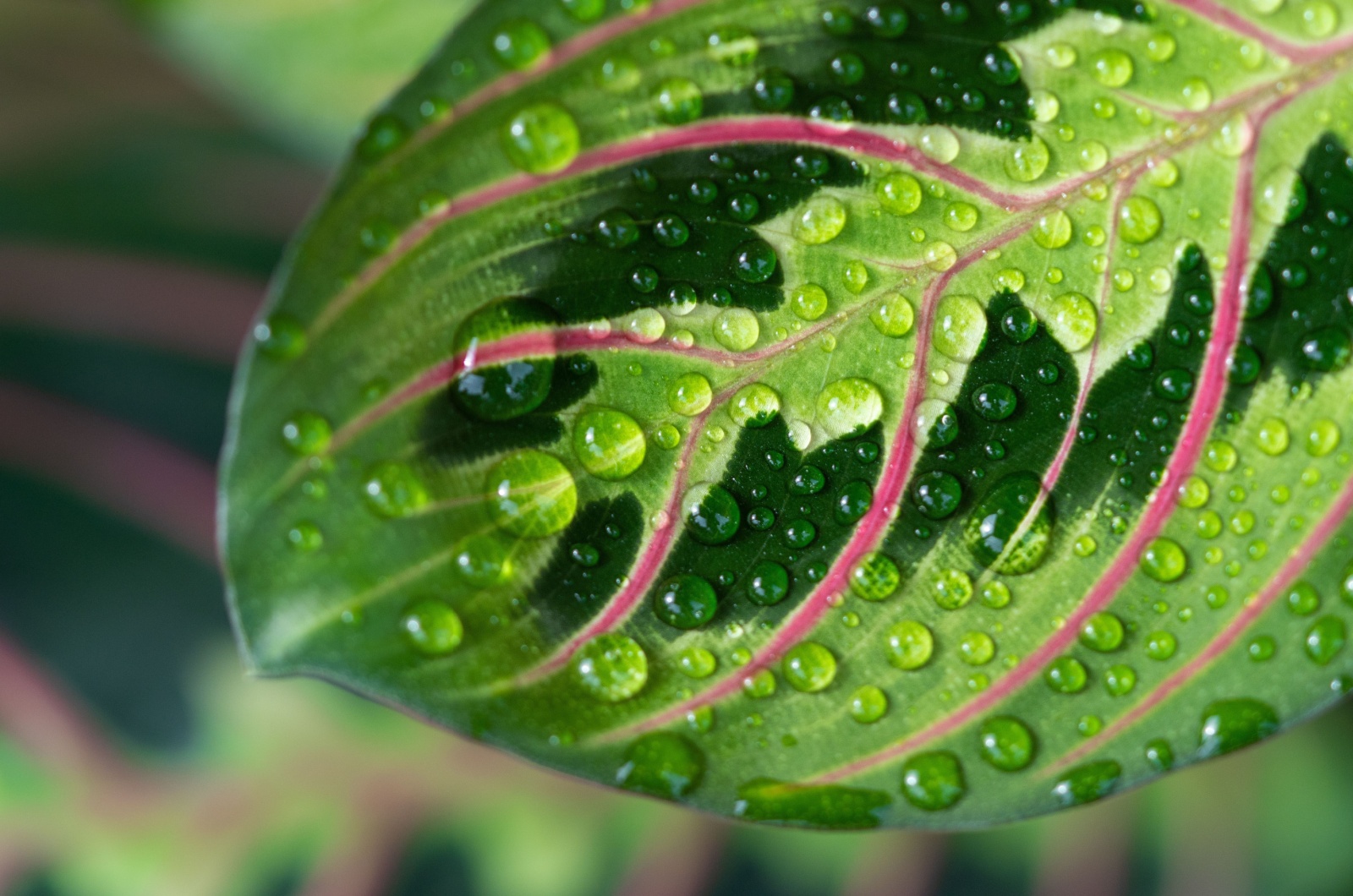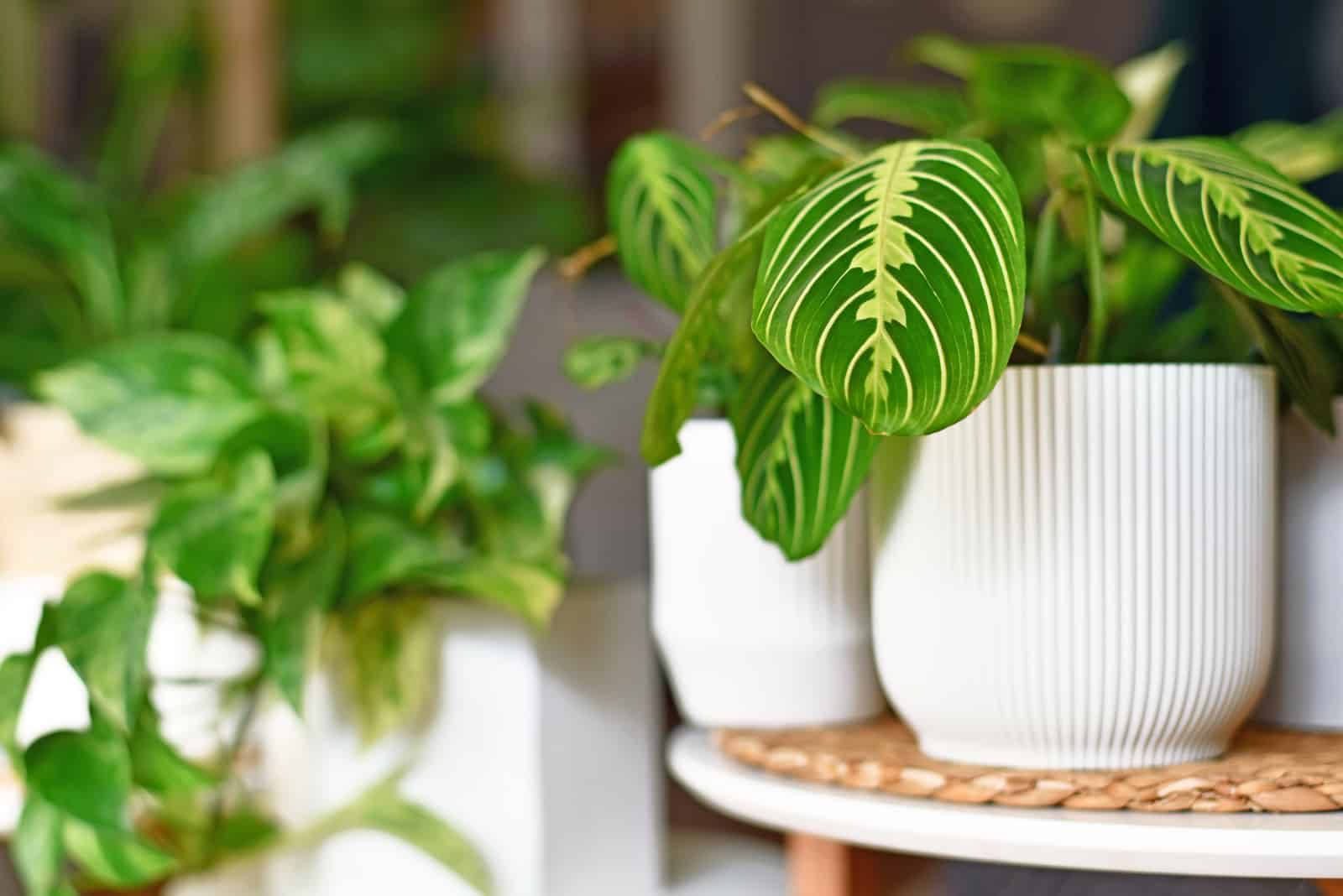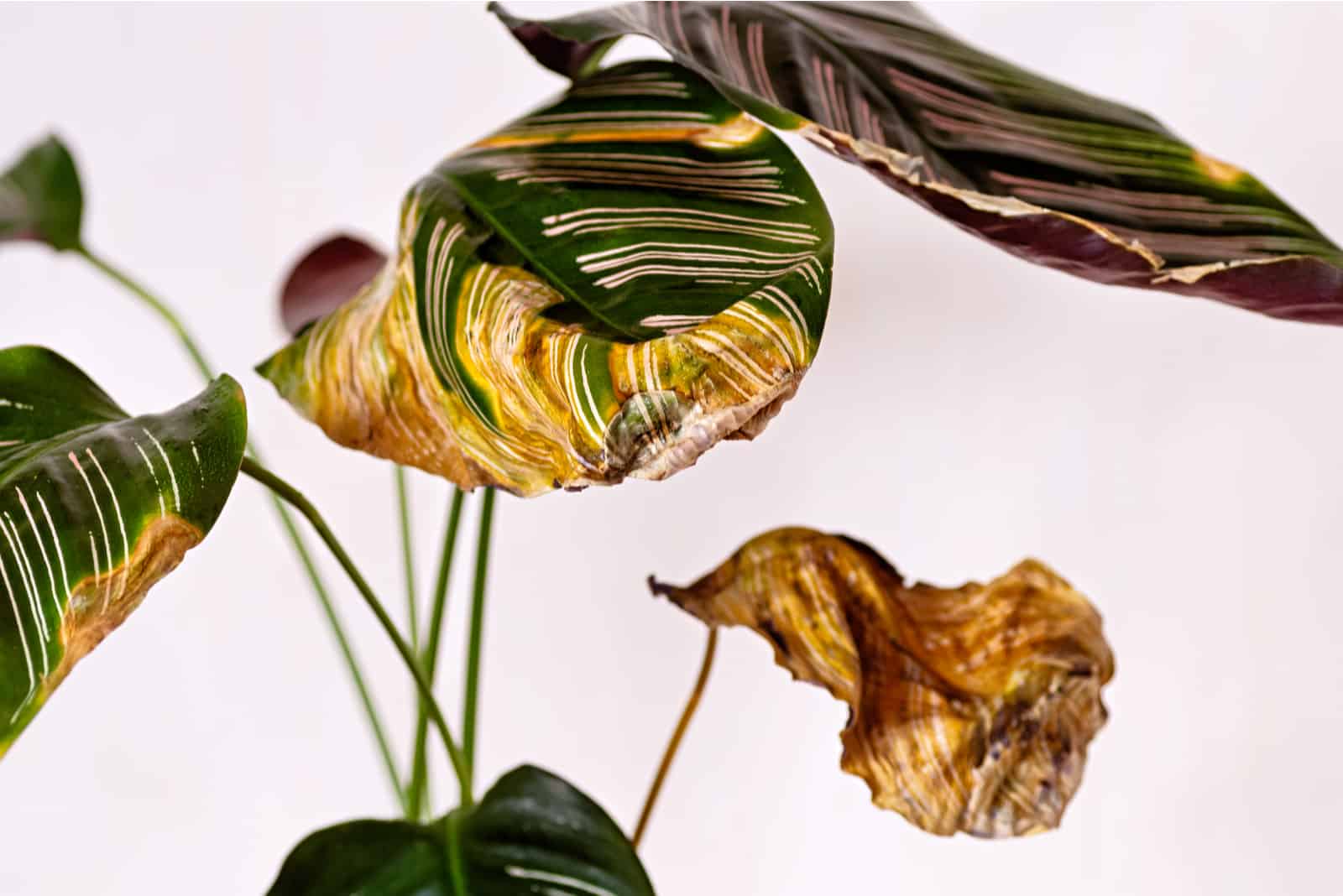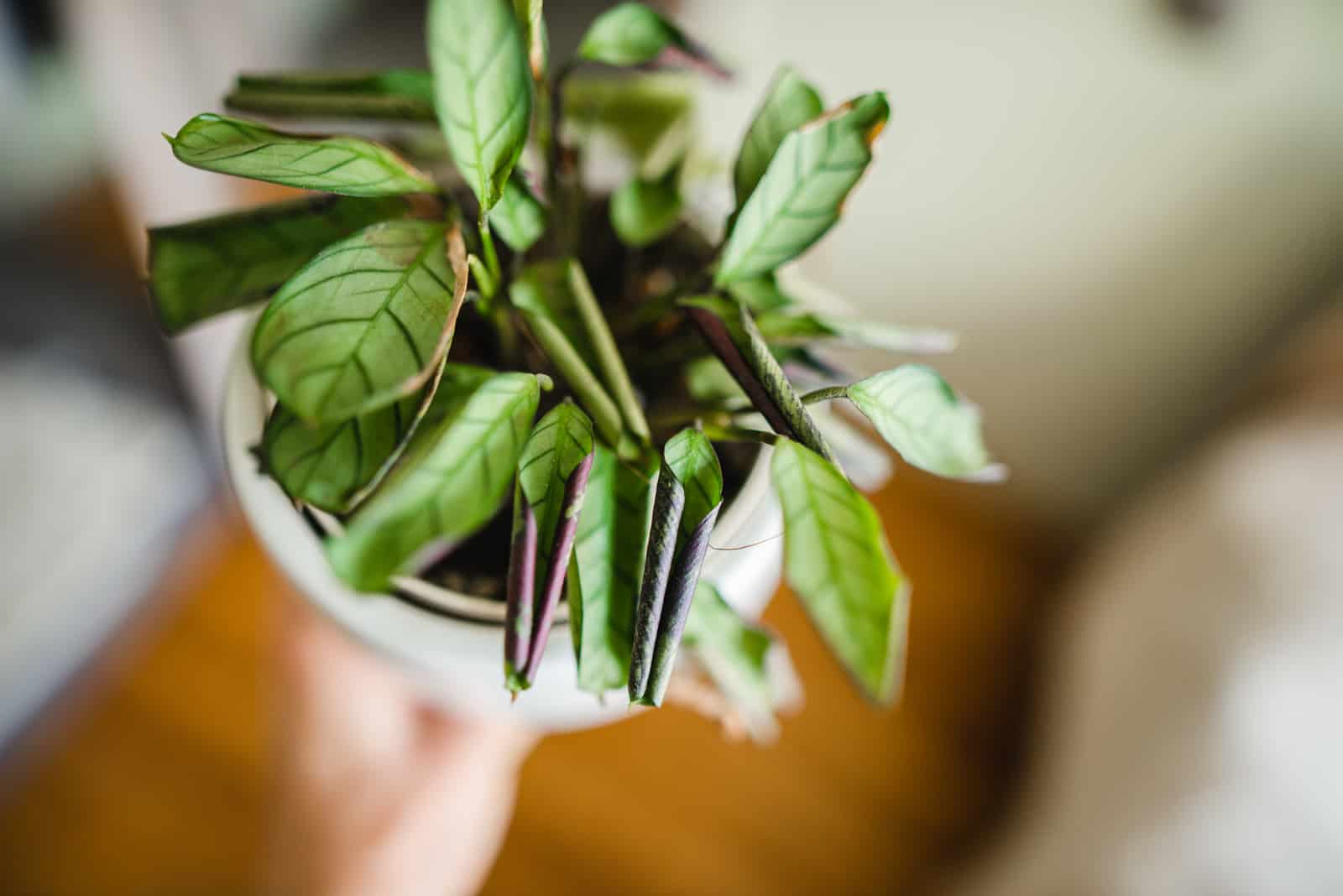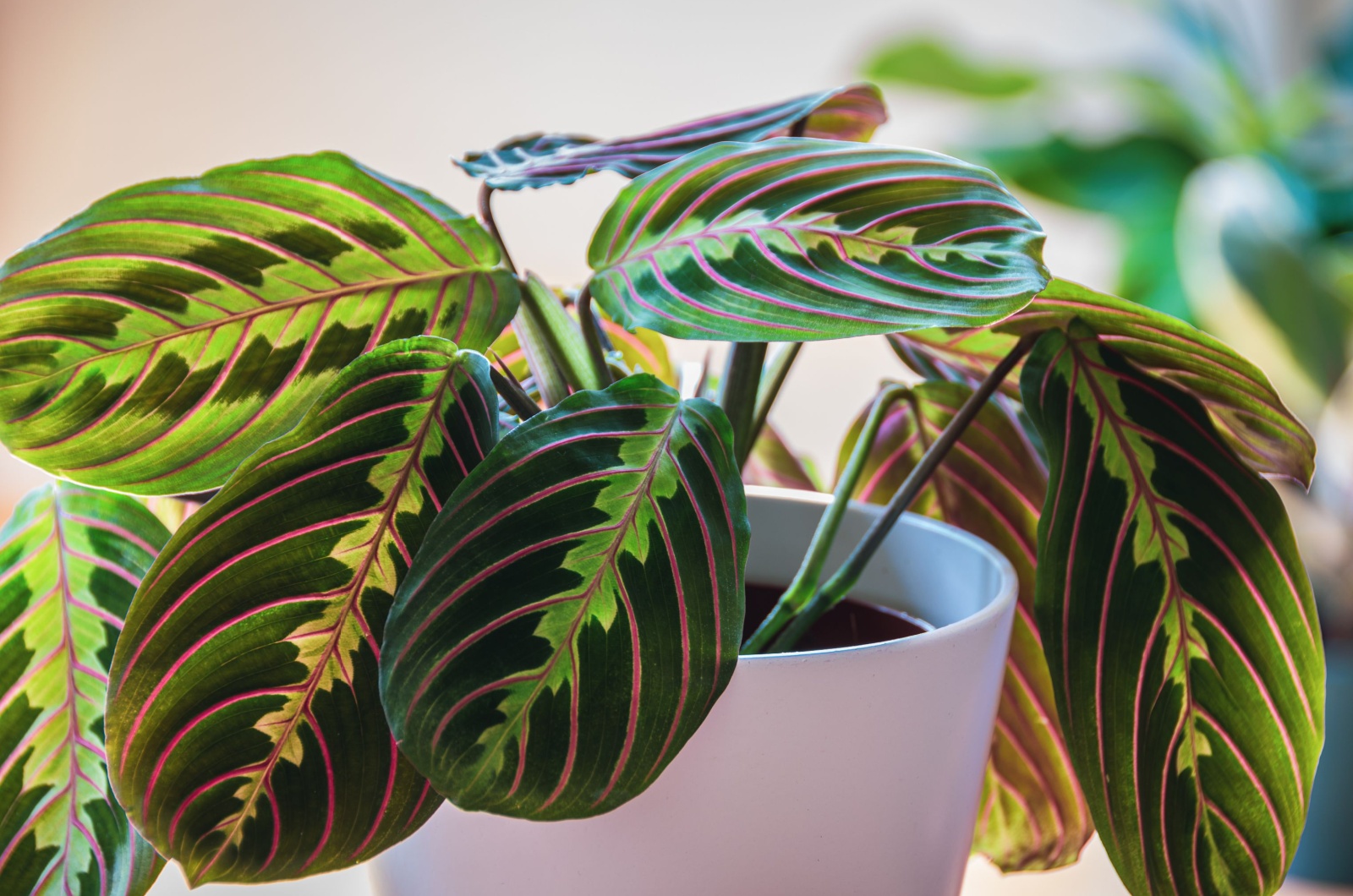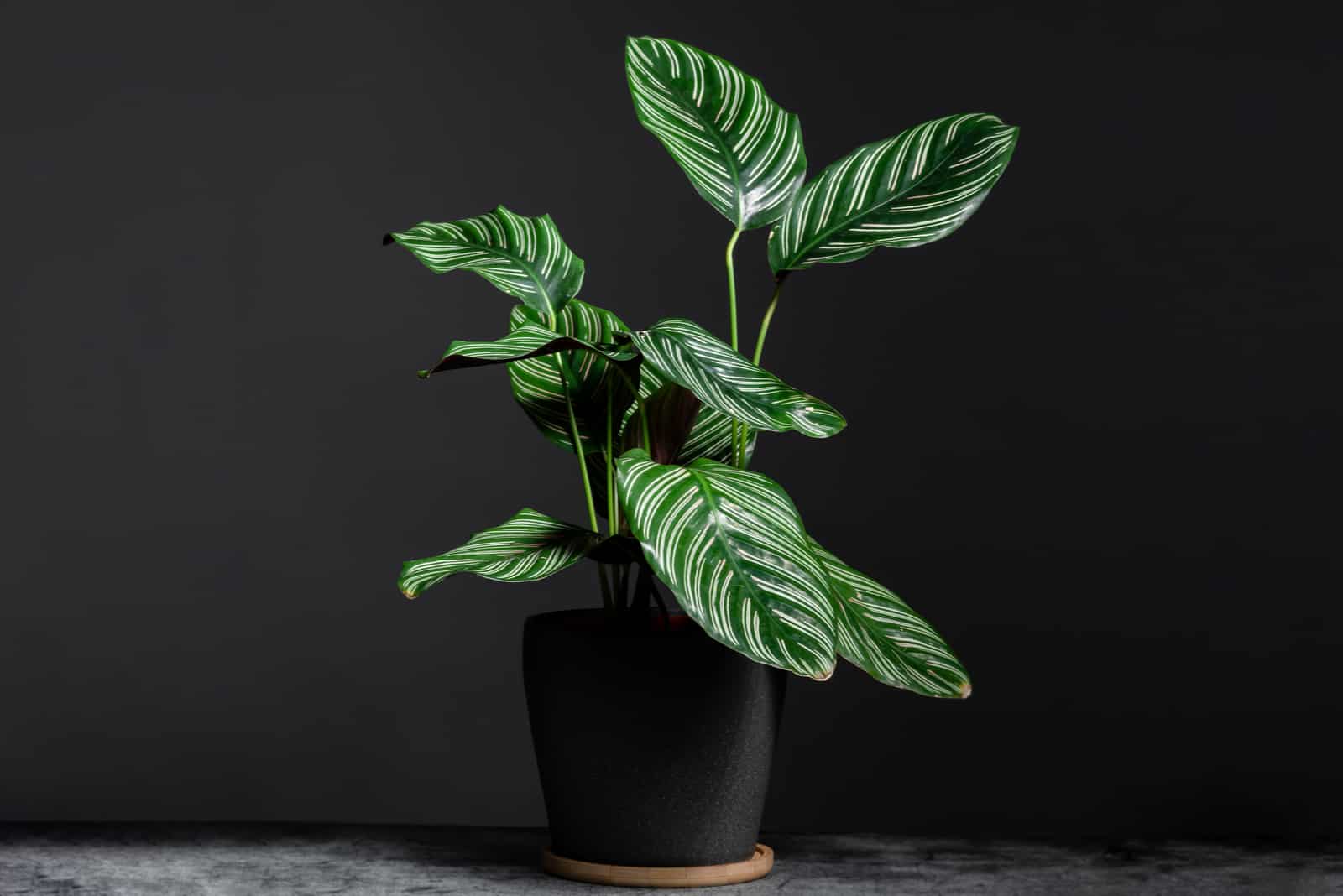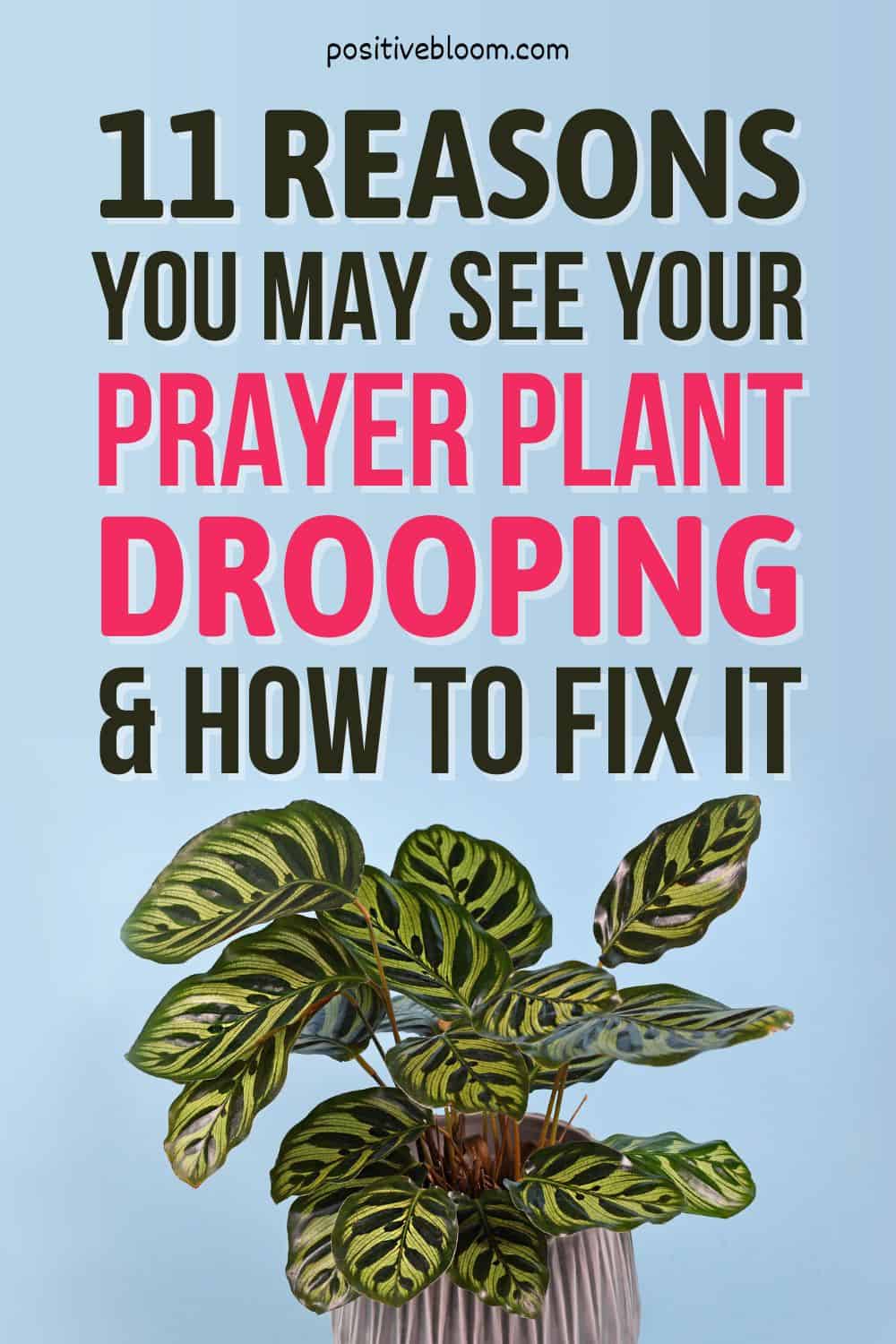So, you have just bought a new plant and have been taking good care of it, but the leaves suddenly started drooping and curling? What went wrong?!
First of all, if you have just bought a new prayer plant, then it’s perfectly normal for its leaves to curl up in the night and then uncurl in the morning. It looks like they are praying, hence the name prayer plants!
However, if the prayer plant leaves stay curled and look droopy, then something isn’t right with your plant.
This can happen to all different types of prayer plants, like Maranta Leuconeura, Calathea, and Goeppertia.
When it comes to tropical plants, it can sometimes be difficult to provide the best conditions for your houseplant because they like warm temperatures and humid environments, which are hard to achieve indoors.
Poor prayer plant care is the main reason you see plants wilting, but thankfully it can be fixed easily!
Read on to see the common causes of Prayer plant drooping leaves and how to fix them.
Why Is My Prayer Plant Drooping?
Prayer plants are popular houseplants nowadays, mainly because they produce glossy leaves with eye-catching patterns on their surface. I bet that you don’t want anything bad happening to these beauties!
There can be a few reasons your plants’ leaves are drooping.
Take a look below to see the causes of prayer plant drooping leaves:
• Underwatering
• Rootbound
• Too much light
• Wrong soil type
• Low humidity
• Overfertilization
• Over watering
• Water quality
• Extreme temperatures
• Pests and diseases
• Physical damage
Let’s go over each of these issues one by one to see how to deal with them.
1. Underwatering
Inadequate watering is a common cause of houseplants behaving oddly. These plants are tropical, so they are accustomed to moist soil, and if their needs aren’t met they will show signs of underwatering.
Some Calathea types, such as the Calathea White Fusion, would rapidly wilt if they weren’t watered, while others can tolerate dry soil for some time.
The leaves will begin to curl, and the entire plant will appear droopy and sad if it’s underwatered.
The leaves curl up as a reaction to the lack of water in order to prevent evaporation from the surface of the leaves.
You should definitely inspect the soil first, and if it’s bone dry you’re likely dealing with underwatering. You can use a finger or chopstick to check the moisture levels, or a moisture meter.
Solution: Give Your Prayer Plant Water Immediately!
The only reasonable answer is to start watering your plant as soon as you detect that it’s dehydrated.
You must analyze the severity of the problem. If you skipped watering for a few days, simply resume regular watering, but if you haven’t watered your Calathea prayer plant in a long time, you may need to soak it so the entire potting soil receives enough moisture to recover.
Soaking is done by placing the plant in a sink or tub filled with water and leaving it for 45 minutes so the water is absorbed via drainage holes in the pot.
Make sure that you are using a proper potting mix that is well-draining, as well as a pot with drainage holes in the bottom.
Continue with an appropriate watering schedule by checking if the top of the soil has dried before watering — and if it has, then water your plant. Otherwise, postpone watering for a few days.
2. Rootbound
Prayer plants, including Maranta species, are not fast growers, and will need 2 to 3 years in order to fully develop. The prayer plant’s roots have been actively growing the whole time, however, and eventually they will run out of space to grow.
If you can see the roots coming out of the drainage holes at the bottom of the pot, or if they are protruding from the soil, then you should repot your plant into a larger pot.
A rootbound plant can have problems with water and nutrient absorption, which can lead to plant wilting and drooping.
Solution: Give Your Plant Some Space
The best thing for your plant would be to give it some more space. The best way is to repot it into a slightly larger pot.
Make sure that the new pot isn’t too much bigger than the previous one so your plant can easily adjust to its new home. It also helps you to avoid overwatering as larger pots have more soil that has to be moist, even though your plant might not need watering.
Drainage holes at the bottom of the pot are a must in every scenario!
When repotting, you can also propagate your plant to get yourself two prayer plants! You can continue nourishing the other one, or you can give it as a gift to someone special. 🙂
3. Too Much Light
Prayer plants originate from deep in the rainforests of Brazil, where they are used to growing in shaded areas below tall trees that block direct sunlight. They thrive best in bright indirect light, though sometimes they can tolerate low light conditions.
Although your prayer plant won’t wilt in low light conditions, this will affect its growth and overall wellness.
However, more significant issues arise when you expose your plant to direct sunlight! The edges of the leaves will start turning brown and those unique patterns on the leaves will vanish.
Your plant won’t look as aesthetically pleasing if this happens, so you better fix the lighting!
Solution: Adjust Lighting
As prayer plants grow best in bright indirect sunlight and can tolerate low light at the same time, it shouldn’t be difficult to find a good spot for this indoor plant.
Find a window that gets at least 6 hours of indirect light a day, or alternatively use curtains to filter the light. I would recommend you put it near a north-facing window, and you will notice how the leaves move towards the light.
Bear in mind that low light doesn’t mean no light at all, so you shouldn’t leave your plant to pray in the dark!
4. Wrong Soil Type
The ideal soil type for these plants is well-draining and constantly moist, while not so compact that it prevents air circulation. If you use the wrong soil type, your plant won’t be able to absorb water properly, which leads to drooping and underwatering.
Soil that’s too compact, like clay, can prevent oxygen from reaching the roots and literally suffocate your prayer plant!
Solution: Make Your Own Potting Mix
You can either buy a potting mix suitable for prayer plants in the gardening shop, or you can make your own!
The materials required are commercial potting soil, peat moss, coco coir, charcoal, perlite, and orchid bark. These materials have the ability to both retain moisture and improve drainage.
You can combine them in different amounts: either use 40% peat moss, 40% perlite, and 20% potting soil, or 50% potting soil, 20% charcoal, 20% orchid bark, and 10% perlite.
If the soil is too compact, you can poke holes in it to allow oxygen to enter.
5. Overfertilization
Excessive fertilization of your prayer plant can cause salt and chemical buildup in the soil, preventing proper water and nutrient uptake.
Although fertilizers include essential nutrients, using them too frequently will cause these nutrients to build up in the soil. This causes several issues because your plant won’t be able to absorb them all at once.
In some cases, too much fertilizer can burn the roots of your plant or lead to root rot, which is a fungal infection that is deadly to your prayer plant.
Solution: Stop Fertilizing & Repot The Plant
At this point, the soil will contain too many chemicals and nutrients, so repotting it in new soil is the first step in saving your plant.
You should also pay attention to what kind of fertilizer you have been using, and make sure it’s the proper one for your plant.
Don’t fertilize during winter because your plant goes dormant and won’t grow.
6. Overwatering
The opposite of underwatering. Giving your plant more than enough water will also lead to wilting and drooping leaves. Lots of water can also lead to root rot, which will prevent the root system from proper nutrient and water uptake.
Overwatering is a common reason many houseplants wilt. My Pilea plant’s leaves started curling due to overwatering, and I barely saved it!
As well as drooping, yellow leaves can also appear, which are another common sign of overwatering.
How to deal with this issue depends on the severity of it. If the soil starts smelling bad, then you will probably have to repot the plant and remove the mushy roots because root rot is the likely culprit. Otherwise, reduce watering and work out the ideal watering routine.
Solution: Stop Watering Your Plant Too Frequently
Your prayer plant is now definitely praying for you to stop watering it so much! As your Prayer plant’s watering requirements are dependent on the soil type, temperature, and humidity, it’s difficult to establish an exact watering schedule. This is why I can’t advise you exactly when to water your plant.
It requires less nutrients and water during the winter when the plant goes dormant and stops growing.
To keep your plant happy and healthy, check if the top of the soil is dry before watering and make sure that there are drainage holes at the bottom of the pot so excess water can drain.
If your plant’s roots haven’t been permanently damaged by the fungal infection, you can stop watering for a little while to let the soil dry out. On the other hand, you should repot the plant if you notice any signs of an infection.
7. Physical Damage
Your prayer plant is delicate and can be easily damaged. If the stems of the plant break, then nutrients and water will be unable to travel to the leaves, which leads to the prayer plant drooping.
Solution: Keep It in A Safe Space
You should keep your plant somewhere safe from kids and pets, but also where you won’t accidentally break it.
If the stems have already broken, you can straighten them and provide them with some kind of support to help them heal and grow.
8. Poor Water Quality
Water quality is one of the reasons your plant might be drooping. While it is normal to water houseplants with tap water, it can sometimes contain damaging minerals and chemicals, especially in large cities.
Chlorine, calcium carbonate, fluoride, salts, and other contaminants may be present in tap water. Excess calcium carbonate and salt, for example, might build up in the soil, clogging the roots and forcing them to return absorbed water back to the soil.
Fluoride operates in a unique way: it has the ability to prevent the leaves from performing photosynthesis. Without photosynthesis, plants are unable to produce the glucose required for survival and oxygen.
If you see the leaves starting to curl and yellow at the tips, the problem is most likely water quality. Chalky, white blotches on the leaves and stems are another thing to be on the lookout for.
Solution: Use Filtered Or Distilled Water Instead
There are a few options for dealing with this problem: first, if you have a filtration system, you can filter your water. If not, distilled or bottled water can be used instead.
Another option is to leave a bowl of water overnight so the chlorine can evaporate. If you live in a region without severe air pollution, you can use rainwater instead. Rainwater is probably the best option (and the cheapest!).
I recommend repotting your Prayer plant in new potting soil because the salts and chemicals in the soil have most likely built up and are interfering with normal root system activity.
9. Extreme Temperatures: Too High Or Too Low
Your Prayer plant is a tropical species that prefers warmer temperatures. Some variants, like Calathea Fasciata, may grow in temperatures as low as 65 degrees Fahrenheit.
When the temperature drops too low, the leaves begin to curl in an attempt to keep themselves warm. On the other hand, if the temperature gets too high, the leaves will become crispy and dry.
Room temperature is generally fine for a prayer plant, but if you see any unusual leaf movement, check the thermostat and set it to 75 degrees Fahrenheit.
Cold drafts and air conditioning should also be avoided because unexpected changes in temperature, whether hot or cold, can shock your plant and result in more serious problems than curled leaves.
Solution: Maintain Preferred Temperature
Maintaining a temperature adequate for your prayer plant shouldn’t be difficult, especially if you live in an area with mild summers and winters.
High temperatures can cause the soil to dry faster, which might lead to problems like underwatering.
Keeping your plant healthy and alive over the winter can be difficult. This is because too much heat (from a space heater, for example) and cold air from drafty windows and doors can both cause problems.
Your plant may be affected by the heat from your computer as well, so keep it away from equipment that heats up quickly.
10. Pests And Diseases
Pests should always be kept in mind when it comes to plant care. These annoyances have the potential to seriously damage your plant!
They are tiny and barely visible to the naked eye, but are capable of chomping through your Prayer plant’s gorgeous leaves and absorbing all of their nutrition.
Spider mites are the most prevalent pest, and because they blend in so nicely with the curling leaves, you won’t notice them at first. After a while, you’ll notice tiny webs, so you will need to act quickly to prevent them from spreading and destroying your entire plant.
These types of plants are also susceptible to aphids and mealybugs, though they are rare.
Some plants are more resistant to pests and diseases than others. Check out this thorough care guide for Calathea Maui Queen, which is one of the Calathea varieties most prone to pests.
The most common disease is the previously mentioned root rot, which is capable of killing your plant if not treated properly. Other diseases are leaf spot and mosaic virus.
Solution: Use Neem Oil Or Pesticide
To fight pest infestation, you can either go organic by putting neem oil on your plant, or use rubbing alcohol. On the other hand, you can use spider mite pesticides to ensure that every spider pest is completely eradicated.
You should also prune any curled or wilting leaves to prevent the spread of the disease.
11. Low Humidity Levels
As they originate from deep tropical rainforests, these plants are definitely used to high humidity, moist soil, and warm temperatures. To provide your plant with the best possible care, you should try and mimic its natural habitat.
Whether you are dealing with the Calathea, Maranta Leuconeura, or Geoppertia species, the outcome is the same: all three absolutely love humid environments!
The main reason your prayer plant might be drooping due to humidity levels is because they are unable to absorb moisture from the air to grow and thrive. If there isn’t enough air moisture, the leaves might start losing water due to the imbalance and end up curling and drooping.
They prefer humidity levels of around 70%, though some Calathea species can tolerate levels as low as 50%.
Normal room humidity levels should work just fine for a prayer plant, though if you aren’t sure, then you can use a hygrometer to measure indoor humidity levels.
Solution: Boost Humidity Levels
There are a few options that can help you increase indoor humidity levels. The most expensive option would be to invest in a humidifier.
A cheaper option is misting, which is basically spraying your plant with water on a daily basis. You can also simply put it in the most humid room in your house, which is the bathroom. Bear in mind that it must have a window or some kind of light source so your plant can grow happy and healthy!
You can also get creative and make a pebble tray to keep your plant moist. Simply arrange some pebbles in a tray, fill it with water, then place your plant on top. As the water evaporates, it will provide the moisture your plant requires.
Check out this video on how to revive a prayer plant (Maranta leuconeura in this case):
https://www.youtube.com/watch?v=vSvpzFQV3u0
How To Keep Your Prayer Plant From Drooping
As we previously mentioned, the best possible way to take care of your prayer plant is to mimic its natural environment. Prayer plants are of tropical origin, so they like shaded areas with indirect sunlight, which is what they would have under tall trees in rainforests!
As they like having constantly moist soil, you should water them frequently. Bear in mind that you have to use contaminant-free water because tap water contains many chemicals that can affect your plant’s health.
The easiest solution is to use rainwater instead, just make sure to check the soil before watering.
Use well-draining soil that contains peat moss and perlite, and fertilize it every once in a while during the growing season. Apply nitrogen-rich fertilizer to encourage lush and vibrant leaf growth.
Keep the humidity and temperature high, and repot the plant once it has outgrown its current container.
Follow our precise plant guide and monitor your plant’s behavior — the plant will tell you what is wrong with it in most cases, you just have to look for signs!
Final Thoughts
Taking good care of your plant is a crucial part of keeping it happy and healthy. For prayer plants to thrive, you must pay close attention to watering, humidity, and temperature.
These are the most important steps in plant care, and if you are not following them, then you will end up with your prayer plant drooping and wilting.
Don’t worry, though!
Even if your plant has started to look kind of droopy, you can easily fix it by determining the problem and solving it. It is a plant problem, not math, so it can be easily solved. 😉
Just check the problems and solutions we covered in this article, and your prayer plant will be as good as new!
Until next time!
Like this post? Share or pin it for later!

